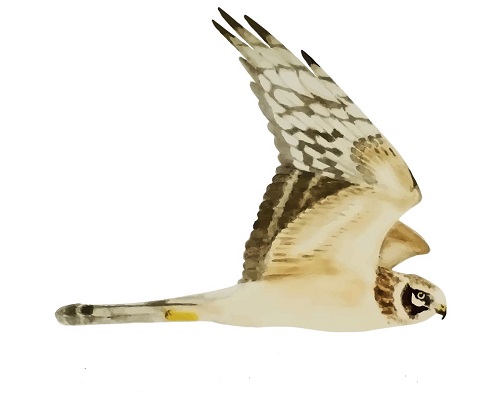Her på Skagen Fuglestations blog bringes korte nyheder i dagbogsformat om hændelser på fuglestationen.
Another foggy day!
Yet again we were up early for morning observations, and yet again the heavy fog persisted over Skagen. A slightly shorter observation today produced 3 Woodcock (Skovsneppe), 60 Oystercatcher (Strandskade), 109 Skylark (Sanglærke) and 2 Goosander (Stor Skallesluger) among others.

Dante in the fog leading to Ellekrattet- Lauren Evans.

Det Grå Fyr in the fog- Johanna Veentjer.
Yehonatan and Lauren headed back to the ringing site at Kabeltromlen to do a bit of pruning along the net rides. Johanna headed to the Cormorant Lake to check on the breeding colony and found 26 individuals present, including some obvious pairs and some occupied nests. She also found some amber on the beach at Nordstrand!
We are also delighted to welcome our new guests to the Skagen Fuglestation apartment, Lotte, and Bretta, who will be staying with us for the week.
A full list of today's observations can be found here.
Today's raptor summary can be found here.
Skagen Fuglestation: Johanna Veentjer, Yehonatan Ben arioa, Dante Shepherd, Lauren Evans, Lotte & Bretta.
Fog...
After the Danish record for the number of migrating Mistle Thrush (Misteldrossel) was set yesterday, expectations were high for today’s morning observation. As a result, all 4 of us (Johanna, Yehonatan, Dante and myself) were at Verdens Endes 1 for sunrise at 6.25am. Unfortunately, we didn’t see the sunrise, or the sea, or many birds for that matter as the whole of Skagen peninsula was covered in extremely heavy fog!!!
Throughout the day the fog cleared marginally although never enough for proper observation and the passerine migration had largely ground to a halt. Dante, alongside Rolf, lasted the longest- an impressive 9 hours birding in the fog! Highlights from today included: 51 Great Crested Grebes (Toppet Lappedykker), 1 Hen Harrier (Blå Kærhøg), 1 Stonechat (Sortstrubet Bynkefugl), 12 Water Pipits (Bjergpiber), 24 Rock Pipits (Skærpiber) and 7 Grey Wagtails (Bjergvipstjert).
Meanwhile, Johanna, Yehonatan and I had a productive afternoon and set up 10 nets in a variety of habitats at Kabeltromlen ready for the season’s ringing to commence next week. Simon had a very successful afternoon in South Jutland where he caught a Buzzard (Musvåge) which was fitted with a GPS tag as part of a project in collaboration with Aarhus University. We’re looking forward to hopefully catching some more migrating raptors in Skagen this year.


We also said goodbye to Lars and Anette this afternoon, our guests who have been staying with us for the week. Thank you for driving our many net poles to the ringing site today and for the wonderful presentation on your Svalbard trip!
A full list of today's observations can be found here.
Today's raptor summary can be found here.
Skagen Fuglestation: Johanna Veentjer, Yehonatan Ben aroia, Dante Shepherd, Lauren Evans
Hoping for better observing conditions...
Hi everyone!
Today was another very slow day. The weather was very stormy and rainy as well, so we decided to not do the usual morning observations. But there is also always something to do at the station as well.
However there were hundreds of Mistle Thrushes (Misteldrossel) migrating today, Erik and our guest Lars entered their numbers on Dofbasen, just klick on the link below.
In the afternoon Dante and Lauren went to the harbour. The juvenile Caspian Gull (Levantmåge) is still there. I went in town as well. In the evening we had a really good dinner, made by Dante and Lauren. Hopefully we will have a little more to write about in the next days. Looking forward!
Today's observations of observers in the area
Sum of the raptors in the area based on observations typed into Dofbasen the same day
People at the station: Lauren Evans, Johanna Veentjer, Dante Shepherd, Yehonatan ben aroia
Humpback whale!
Today we started the day with morning observations at worlds end 1. after a few slow days, today we started to have some birds moving around, with some good number of passerins and sea birds, but the highlight of the day was defenetly a Humpback whale (Pukkelhval) that dante found, and we all (Yehonatan. Lauren, Dante, Joana) watched it several times goes up and diving back down.
Whooper swans (Sangsvane) flying over, Yehonatan ben aroia

More and more Blue tits (Blåmejse) every day now
other highlights from today are a immature Golden eagle, (Kongeørn) Great northen diver (Islom), 9 Shags (Topskarv), 120 Mislte thrushes (Misteldrossel), Caspian gull (Kaspisk Måge) and many other great birds.
When we arriven back to the station, the weather started to change after a the calm morning. the wind got very strong with some rain, so we all stayed at the station doing indoor tasks for the rest of the day.
A full list of today's observations can be found here.
Today's raptor summary can be found here.
A busy day at the station!
As usual, the day started with Dante, Yehonatan and I heading out for morning observations from Verdens Endes 1. Our highlights from our 4 hour watch included 103 Skylark (Sanglærke), 1 Carrion Crow (Sortkrage), 1 Goosander (Stor Skallesluger) and 27 Fulmar (Mallemuk).
After joining us at Verdens Endes 1, Lars birded the local area and saw 3 adder (Hugorm) and a female Goshawk (Duehøg). Later in the day, 2 Golden Eagle (Kongeørn), a White-tailed Eagle (Havørn) and a Rough-legged Buzzard (Fjeldvåge) were spotted from Verdens Endes 1 by Ragnar Smith. Johanna and Simon began preparing the netting site for the season’s ringing which will start very soon.


Cormorant on a nest and Adder by Lars.
In the afternoon, Yehonatan set about mending some pyramid traps whilst Johanna and I headed off to conduct a Fulmar (Mallemuk) survey. Throughout the year, we are walking a number of 10km transect around the Skagen coastline to collect dead seabirds, with a particular focus on Fulmars. These birds are sent to Aarhus University who are investigating plastic pollution and contents in the stomach. Johanna and I also used the opportunity to do a beach-clean and we managed to collect 4 bags of rubbish on our way around as well as 2 Fulmars for the study.

Johanna with two bags of rubbish collected from the Skagen coastline.
A full list of today's observations can be found here.
Today's raptor summary can be found here.
Skagen Fuglestation: Yehonatan, Dante, Johanna, Lauren, Lars & Anette
Spring arrivals and Raptors
With sunrise creeping ever earlier, Johanna, Lauren and I started our morning observation at 6:30am. Luckily, yesterday’s heavy rain has melted most of the snow although it still felt like winter up at Verdens Endes 1. Our highlights of the morning were 6 Buzzards (Musvåge), 3 Red Kite (Rød Glente) (hopefully representing the start of the raptor migration), the first White Wagtail (Hvid Vipsjert) of the year, 2 Lesser Black-backed Gulls (Sildemåge) (also the first of the year) and 31 Mistle Thrush (Misteldrossel).


Red Kite and gulls by Lars
Meanwhile Yehonatan headed to the harbour to collect some bait for the raptor project we are undertaking here at Skagen Fuglestation. Back at the station, Simon hosted the board of the bird observatory for a productive meeting.
People at the station: Lauren Evans, Johanna Veentjer, Dante Shepherd, Yehonatan ben aroia, Lars, Anette
Slow and rainy day at the station
Hi everyone!
We saw a lot of really interesting birds today; raptors, owls, a great variety of passerines and waders… but all of them would just stare at us, not moving or flying at all… they were stuffed ones! Simon brought them over, they are supposed to be part this year’s exhibition.
As it was raining all day long, we weren’t out observing, it was a really slow day. We just spend most of the day working on our laptops. Each of us has to prepare a presentation for the others about a specific topic, and I started doing my research on that today. It also turned out that Lauren is really talented in drawing.
Now Lauren and Yehonatan are out in the field nightcatching. I hope they will have success! I will update the blog later when they are back.
Update: They saw one Woodcock (Skovsneppe) but unfortunately didn't catch anything.
Todays observations of observers in the area
Sum of the raptors in the area based on observations typed into Dofbasen the same day
People at the station: Lauren Evans, Johanna Veentjer, Dante Shepherd, Yehonatan ben aroia
Still cold and snowy
We started the morning going to do morning observtions all of us together (Yehonatan, Dante, Lauren, Joana ) at Worlds end 1 . We had anoter slow morning with not much going on, good numbers of Red throated divers (Rødstrubet Lom) and a few very distand Fulmars (Mallemuk) and very few passerines
Reed bunting feeding, Grenen. Photo: Yehonatan ben aroia
Later that day our lovely guests Lars and Anette arrived to the station, Dante and Lauren went to look for some birds, with not many around the station right now, and Joana coocked a lovely dinner, i (Yehonatan) went once again to visit the Iceland Gull (Hvidvinget Måge).
Later the weather got worse with very strong winds and some snow, and we all stayed in.
A full list of today's observations can be found here.
Today's raptor summary can be found here.
People at the station: Lauren Evans, Johanna Veentjer, Dante Shepherd, Yehonatan ben aroia, Lars, Anette
x
Continuing with morning observations
Hi everyone!
Finally it was possible to do the morning observation as its usually done, so Dante, Lauren and Yehonatan went out in the morning for 4 hours. Their highlight was the adult male Goshawk (Duehøg) and a Shag (Topskarv).
I started cleaning in the morning (Saturday is our cleaning-day) and locked myself out of the flat by accident, which was not that nice… But I was glad to meet Michael Ancher, who came around in the morning to bring some things for the stations use, thanks!
In the early afternoon I went out for a long walk again. Unfortunately I didn’t see so many birds, only some Goldcrests (Fuglekonge) accompanying me on my walk threw the forest and a Ringed Plover (Stor Praestekrave) at the beach. Still it was amazing to spend the afternoon in the beautiful, snow-covered landscape, while it was quite sunny and almost no wind.

Iceland Gull by Yehonatan
Dante and Lauren went to the harbour in the afternoon, to see the juvenile Iceland Gull (Hvidvinget Måge) again, which is still there. They saw a Peregrine Falcon (Vandrefalk) as well.
We had a nice dinner together, Yehonatan cooked Lasagne for us.

Det Grå Fyr in the evening
Looking forward to welcome our first guests for the apartment tomorrow!
Sum of the raptors in the area based on observations typed into Dofbasen the same day
Todays observations of observers in the area
People at the station: Lauren Evens, Johanna Veentjer, Dante Shepherd, Yehonatan Ben aroia
Gulls in the harbour
It is still feeling like winter here in Skagen… Migration has mostly been thwarted for now. Johanna went for a long walk to Nordstrand and back this morning. She saw 12 Bearded Tits very close (Skægmejse) near the car park at Nordstrand. Yehonatan and Lauren opened the nets opposite the Lighthouse, they did not catch anything but saw a Woodcock (Skovsneppe). Lauren and I went to the harbour around midday, we were pleased to find a juvenile Iceland Gull (Hvidvinget Måge).

Iceland Gull
The same Caspian Gull (Kaspisk Måge) from the other day was showing well too, both species alongside each other at times.

Caspian Gull (below) with Iceland Gull
Simon, Yehonatan and Johanna successfully twitched both birds, a new species for both Yehonatan and Johanna.
A full list of today's observations can be found here.
Today's raptor summary can be found here.
People at the station: Lauren Evans, Johanna Veentjer, Dante Shepherd, Yehonatan ben aroia






